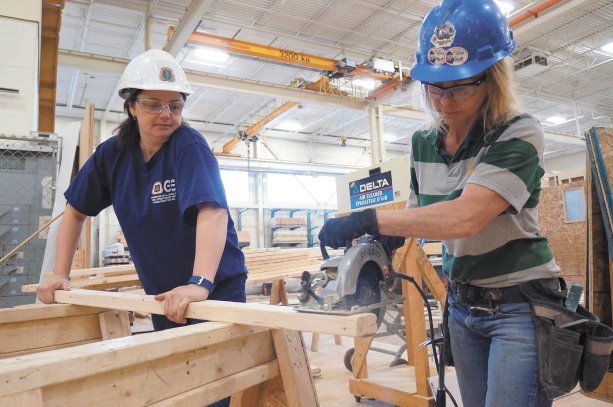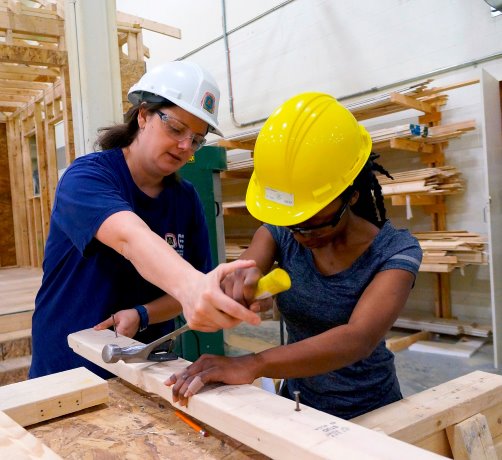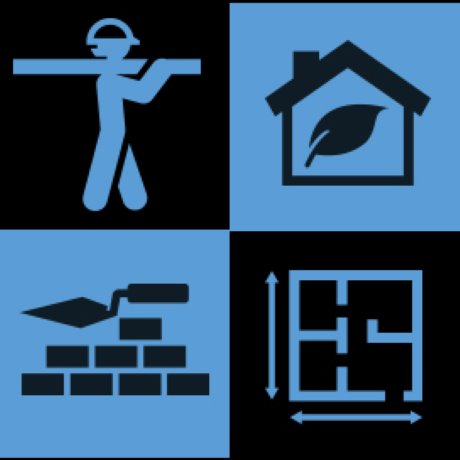The College of Carpenters and Allied Trades (CCAT), located at Carpenters’ Local 27’s training centre in Vaughan, Ont., has set up a mentorship program that gives women entering the trade an opportunity to share their experiences in the male-dominated field with experienced female carpenters.
"Developing coping strategies right from the outset is paramount," says Kathryn Trickett, 33, the new program’s lead mentor and an instructor at the training centre. "A lot of women entering the trade don’t have coping and soft skills to work in a male-dominated industry."
She notes the attrition rate of women in the trades is much higher than that of men.
Trickett, a Red Seal certified carpenter in the trade for 10 years, says an example of soft skills is when men try to help women by doing some of their work for them.
"They might not realize it but they are taking away work from those women," she says.
Women on the job have to learn to stand up for themselves — often that means declining offers from men for help, she points out.
"When they do the same work as the men, that is when they gain their acceptance and respect."
The mentoring program offers female students opportunities in class and after to sit down with their peers and mentors to discuss issues, which might go beyond experiences on the job with men.
"Looking at the logistics of how to keep the job when they start having a family is a real concern as well," says Trickett, a mother who takes her two-year-old son to daycare at 5:30 a.m. before heading to work every day.
"We have women just coming into the trade and women who have been in the trade for a couple of years that we are mentoring," she says, adding some women come through the Ontario Youth Apprenticeship Program (OYAP), a school-to-work transition program, for example.
One of two staff mentors, she says the initiative was set up to provide peer-on-peer mentoring. Students with a couple years or more of training also assist new apprentices.
The mentoring program offers regular group meetings where female students can air their concerns. Once on the jobsite, follow- up meetings will be conducted through social media formats such as Facebook.
Trickett says the mentorship program is in part spawned by a Canada-U.S.-wide goal by the United Brotherhood of Carpenters to increase the number of women in the trade from about 3.5 per cent today to 20 per cent in 2020.
To help meet that goal, parents and high school guidance counsellors have to be more open about a career in the trades for their daughters (and sons).
Many students turn to the trades because they couldn’t land good-paying jobs after graduating from university or college, Trickett points out.
"The average age of an apprentice is 28. We want to see that age drop because trades apprenticeship is truly the third post-secondary destination," she explains.
Kathy Bedard, an apprentice at the intermediate level at CCAT, is a peer mentor to new apprentices. Bedard, who raised a family before getting into the field three years ago, offers advice to women in class and entering their first jobs in the field.
At CCAT’s floor-covering apprenticeship program, Laura Graham-Sawchyn is an instructor and mentor to female students. The first woman with a Red Seal certification in the floor-covering trade in Canada, the 26-year-old says it is important for women on new jobs to let their supervisors know if they can’t do certain physical tasks. But it is equally important to tell supervisors the tasks they can do as well as the men.
Trickett says some men on jobsites want to "rescue" a woman — particularly a small one — from an arduous physical task.
She advises those women to hold their ground.
"It’s not about being a woman, it’s about being good worker," she says.
CCAT’s mentoring initiative applies to all apprenticeship training levels and other programs taught at the training centre in Vaughan such as the eight-week course for students in OYAP.
OYAP students completing the eight-week course receive an additional two weeks of "job-ready" training at CCAT, says Trickett. The CCAT then assists students in finding jobs.
"Depending on the year and factors like the economy, we place everyone who wants to be placed on paid union jobs," she adds.

1/2
Mentor/instructor Kathryn Trickett helps student Kathy Bedard at the College of Carpenters and Allied Trades in Vaughan, Ont.
Photo: DON PROCTER
2/2
Rofiat Olusanye











Recent Comments
comments for this post are closed